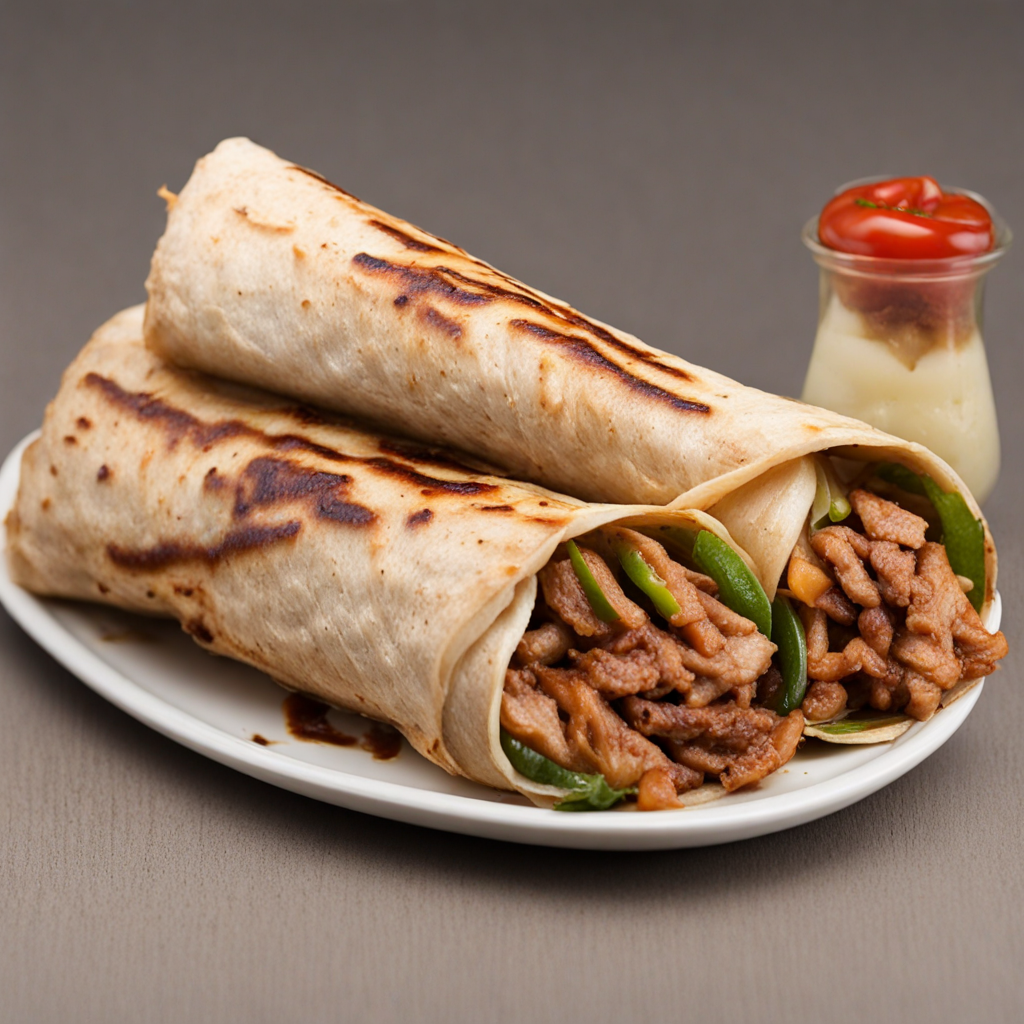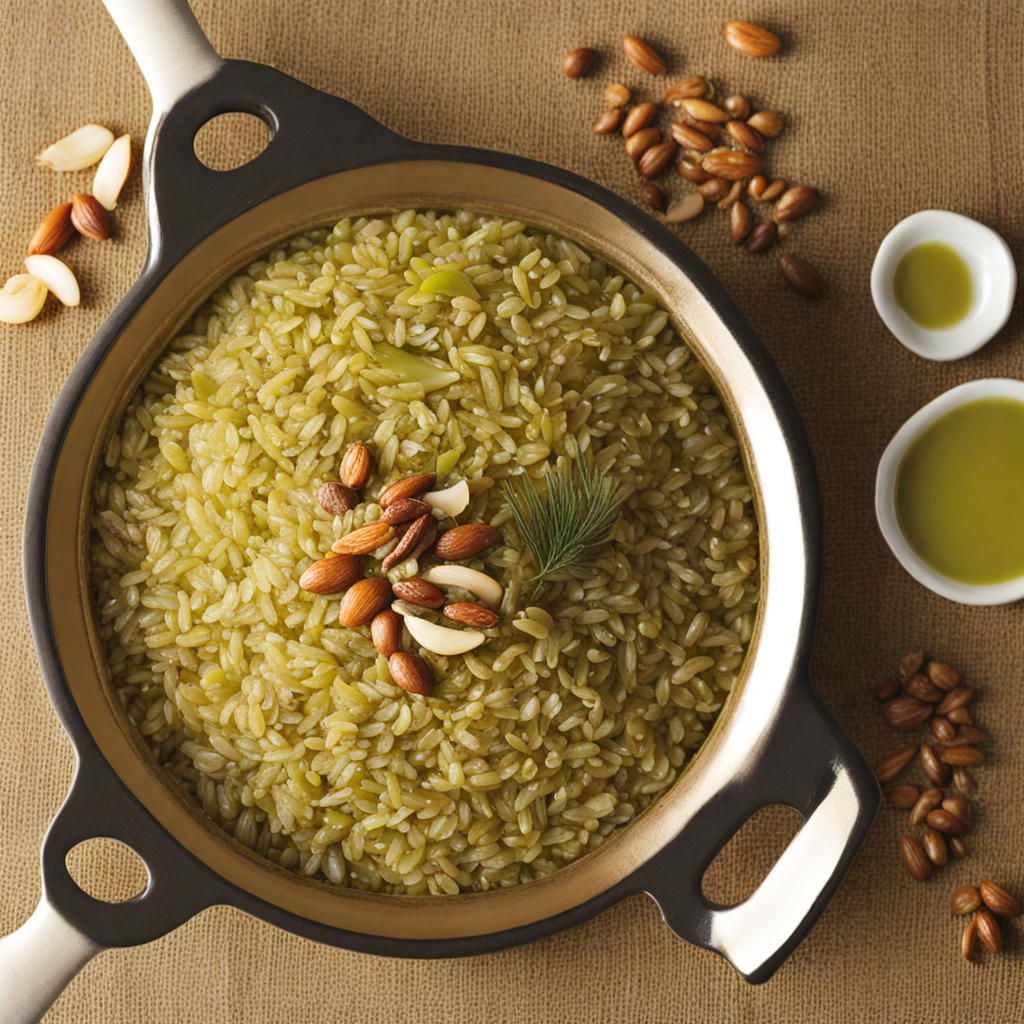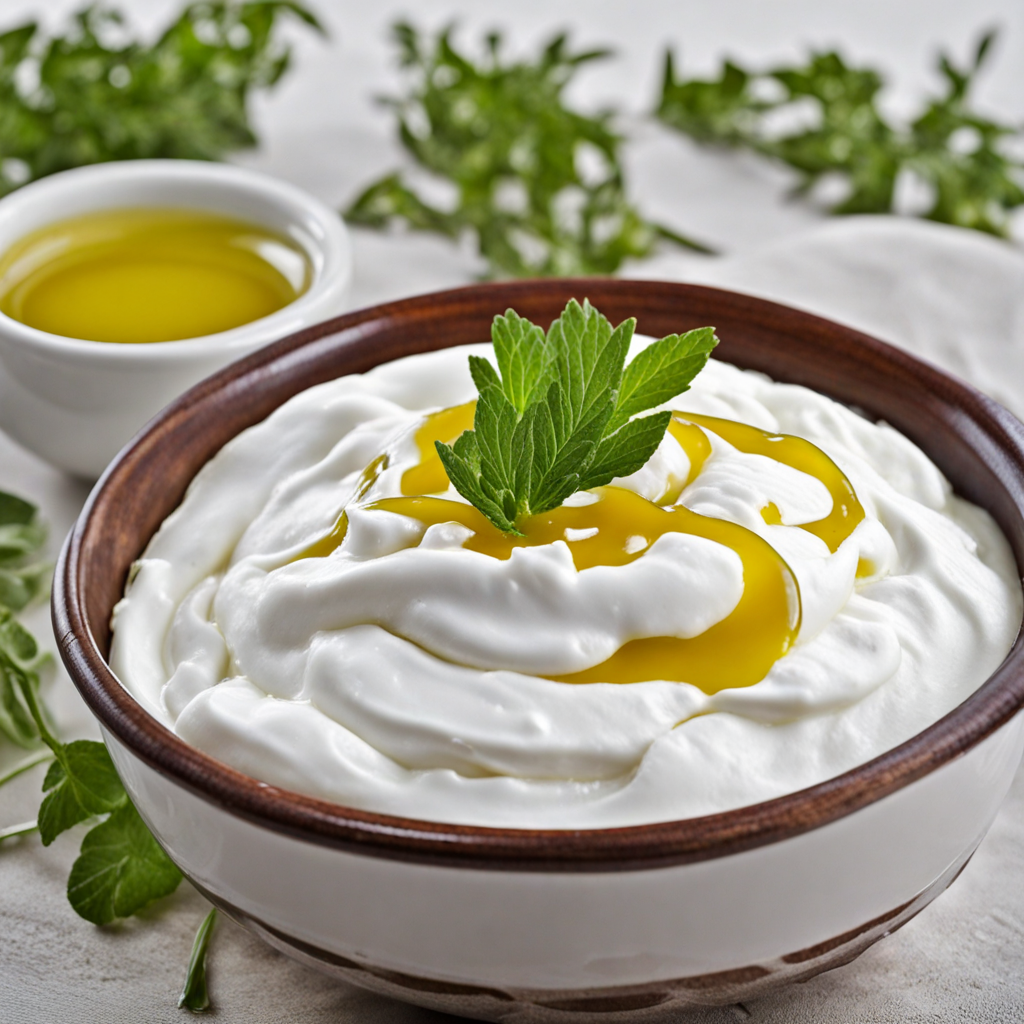Shawarma
Shawarma is a beloved Middle Eastern dish that has its roots in the Levant, particularly in countries like Jordan. It features succulent slices of marinated meat, typically lamb, chicken, or beef, that are cooked on a vertical rotisserie. As the meat slowly turns, it becomes perfectly tender and imbued with a medley of spices, including cumin, coriander, garlic, and paprika. The tantalizing aroma wafts through the air, drawing in passersby and inviting them to indulge in this flavorful delight. When served, shawarma is often accompanied by a variety of fresh vegetables, such as tomatoes, cucumbers, and pickles, which add a refreshing crunch. The meat is usually wrapped in warm, fluffy pita bread or served on a plate with rice or fries, offering a delightful contrast in textures. A generous drizzle of tahini sauce or garlic sauce brings a creamy element that complements the spices beautifully, creating a harmonious balance of flavors that dance on the palate. In Jordan, shawarma is not just a meal; it’s an experience. Street vendors and restaurants alike take pride in their preparation methods, often showcasing the artistry involved in crafting the perfect shawarma. Whether enjoyed as a quick street food snack or a sit-down meal with friends and family, every bite of shawarma transports you to the bustling markets and vibrant culture of Jordan, making it a must-try for any adventurous food lover.
How It Became This Dish
The Origins of Shawarma Shawarma, a beloved Middle Eastern dish, traces its roots back to the Ottoman Empire, specifically to the 19th century. It evolved from a Turkish dish called " döner kebab," which consisted of marinated meat cooked on a vertical spit. The term "shawarma" itself is derived from the Arabic word "شاورما," which is believed to be a derivative of the Turkish word "çevirme," meaning "to turn." As the Ottoman Empire expanded, it brought with it culinary traditions that transformed local food cultures across the region, including what is now Jordan. The method of cooking meat on a vertical rotisserie allowed for a unique combination of flavors and textures, as the outer layers became crispy while the inner meat remained juicy. This innovative technique quickly gained popularity, becoming a staple in street food across the Levant, including in Jordan. The blending of spices and marinades, often including garlic, cumin, and coriander, further contributed to the dish's rich flavor profile. \n\n Cultural Significance in Jordan In Jordan, shawarma is more than just a meal; it is a cultural symbol that embodies the spirit of communal dining and hospitality. Shawarma stands can be found in every corner of the country, from bustling cities like Amman to small towns, showcasing its status as a popular street food. The dish is often served with a variety of accompaniments, such as tahini sauce, pickles, and fresh vegetables, allowing for a personalized experience that reflects local tastes. Shawarma is a dish that transcends social boundaries, enjoyed by people of all ages and backgrounds. It is commonly found at family gatherings, celebrations, and casual outings, making it a versatile food that brings people together. In urban settings, shawarma has become a late-night favorite, a go-to option for young people after a night out, further cementing its place in contemporary Jordanian culture. \n\n Development Over Time As shawarma spread throughout the Middle East, it underwent numerous adaptations and variations. In Jordan, the dish has evolved to incorporate local flavors and ingredients. While the classic preparation typically uses lamb, chicken, or beef, Jordanian shawarma often features a unique blend of spices that reflect the country's culinary heritage. The use of spices like allspice and sumac adds a distinct flavor that sets Jordanian shawarma apart from its counterparts in other regions. In recent years, shawarma has also seen an influx of modern interpretations. With the rise of food trucks and gourmet restaurants, chefs are experimenting with fusion styles, introducing new ingredients and cooking techniques. This evolution has not only kept the dish relevant in a fast-paced culinary landscape but has also allowed for the preservation of traditional methods alongside modern twists. \n\n Shawarma Beyond Jordan The popularity of shawarma extends far beyond Jordan, becoming a global phenomenon. As Middle Eastern cuisine gained recognition in Western countries, shawarma found its way into diverse culinary scenes. It is often featured in food festivals, pop-up restaurants, and food trucks, appealing to a wide audience who appreciates its flavor and convenience. In cities like New York, London, and Toronto, shawarma has been embraced by local communities, often adapted to suit regional tastes. These variations include different sauces, toppings, and even bread types, showcasing the versatility of the dish. Despite these adaptations, the essential elements of shawarma—marinated meat cooked on a spit, served with fresh accompaniments—remain true to its origins. \n\n Shawarma in Modern Culture In the digital age, shawarma has also found its place in popular culture. Social media platforms have played a significant role in its promotion, with food bloggers and influencers sharing vibrant images and videos of shawarma preparations and tastings. The dish has become synonymous with comfort food, often shared among friends and family in posts, further enhancing its cultural significance. Moreover, shawarma has inspired culinary events, such as "Shawarma Festivals," where enthusiasts gather to celebrate this iconic dish. These festivals often include cooking competitions, tastings, and educational workshops, fostering a deeper appreciation for the rich history and diverse interpretations of shawarma within the Middle Eastern culinary tradition. \n\n Health Aspects and Sustainability As global food trends shift towards healthier and more sustainable options, shawarma is also adapting to these changes. Many vendors now offer leaner meats, vegetarian alternatives, and organic ingredients, catering to a growing health-conscious consumer base. The emphasis on fresh vegetables and herbs in shawarma further contributes to its reputation as a wholesome meal. Sustainability has also become a focus within the shawarma industry. Local suppliers are increasingly being favored over mass-produced ingredients, ensuring that the food served is not only fresh but also supports local economies. This shift towards sustainability reflects a broader trend in the culinary world, where consumers are becoming more mindful of their food choices. \n\n Conclusion Shawarma's journey from the streets of the Ottoman Empire to the global stage is a testament to its enduring appeal and adaptability. In Jordan, it remains a cherished dish that symbolizes community, culture, and the rich tapestry of flavors that define Middle Eastern cuisine. As shawarma continues to evolve, it not only preserves its traditional roots but also embraces modern culinary innovations, ensuring its place in the hearts and stomachs of food lovers around the world.
You may like
Discover local flavors from Jordan







